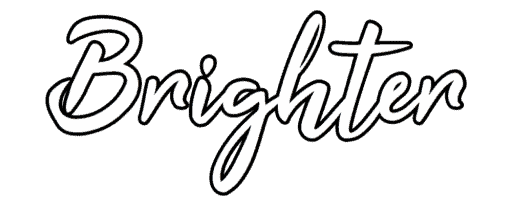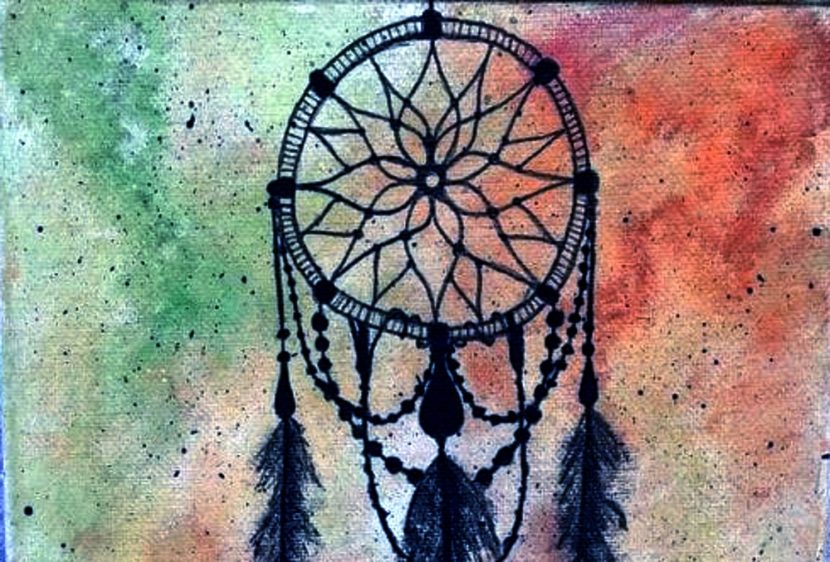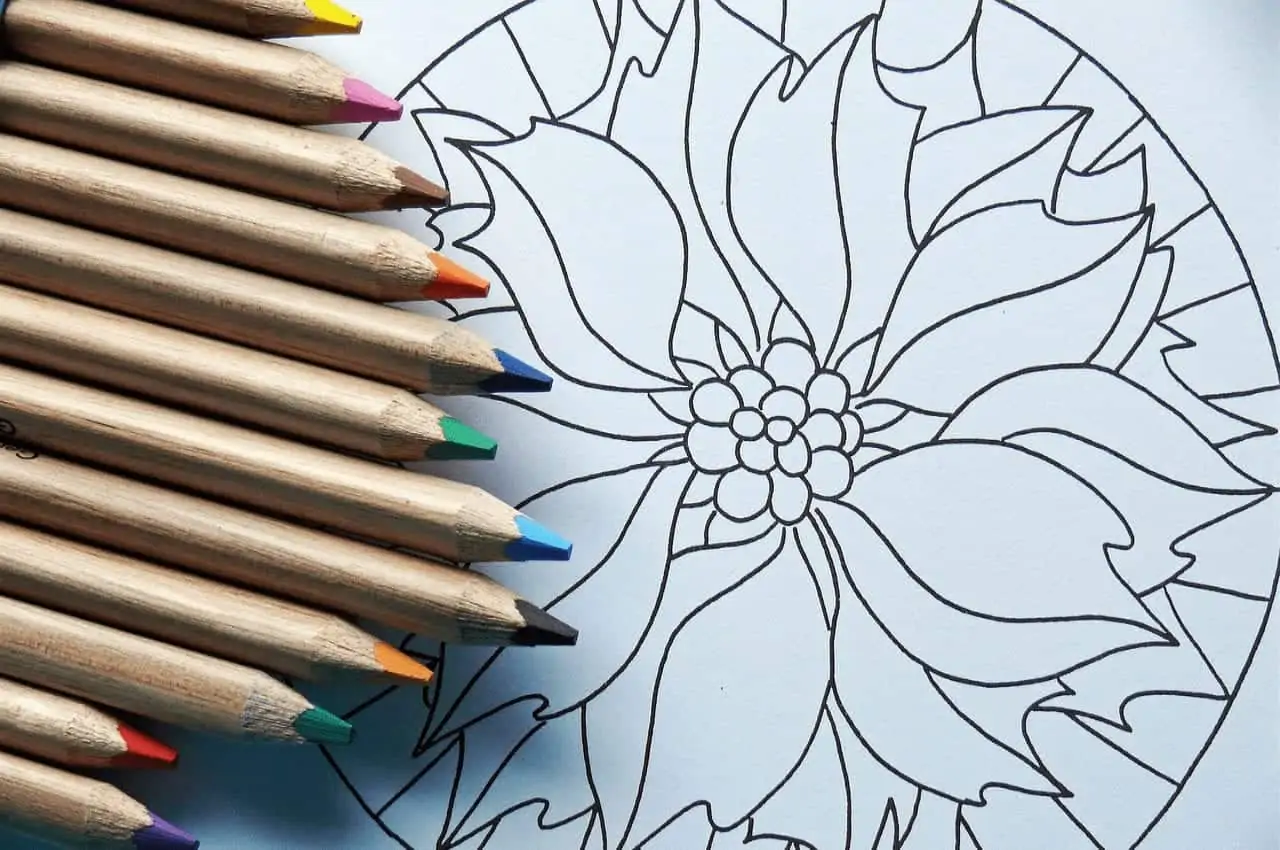Yes, you can draw over Acrylic paint in numerous ways. Acrylic paint is a popular choice for artists due to its versatility and ability to dry quickly. You can use pencils, pens, charcoal, pastels and more to draw over Acrylic paint and many people would say this is the start of something called a multi-media painting, as it uses more than one painting or drawing medium.
There are some basic things you need to learn that are listed below. In general it is a good idea to let the paint dry first. Because acrylic paint is water based, other mediums may mix with the pigment until it is dry. This can cause problems.
You can paint over acrylic paint too. It makes a great primer when using oil paints, but watercolors will not bond well to a dry acrylic paint.

Table of Contents
What Can You Use to Draw Over Acrylic Paint?
You can use several different media to draw over acrylic paint. These include:
- Pencils (graphite or colored)
- Pens (Ink pens, felt tips or brush tips)
- Markers (alcohol-based or water-based)
- Charcoal
- Pastels
Even if you use smooth brush strokes the dried surface of Acrylic paint has a slight texture. This provides a great surface for the mediums listed above. With pencils, charcoal and pastels you will need to fix the surface after you have added the lines and some people use a ground before they start drawing to improve the surface, but I rarely find this necessary unless the Acrylic paint has been diluted.
You can smudge and layer the charcoal or acrylic in the same way you would normally use it and pencils can be used for shading as well as to draw defined lines
Pens and markers will give you bold lines and won’t need a fixative in general. Even water based markers will work fine if the surface is thoroughly dry first.

Tips for Drawing Over Acrylic Paint
Before you start drawing over your acrylic paint, there are a few things to keep in mind:
- Make sure the paint is completely dry. If the paint is still wet, the ink or graphite from your drawing media may spread or bleed.
- If you want precise lines you can use a fixative spray to help set the paint and prevent smudging or smearing as you draw.
- Experiment with different drawing media to find the one that works best for you and your project.
The exception to the first rule is if you are deliberately trying to disrupt the surface of the Acrylic paint. If you are using thick layers of acrylic paint you can effectively draw grooves into the surface to create lines. Adding texture like this can work in many ways and is called ‘Impasto’ at art school.
Using thick layers of paint you can use the brush strokes and your palette knives to create shape and depth within your paintings and using a scribe or the handle end of a brush to cut lines into the paint can create extra shape where there is little color change.
You can even paint multiple layers of paint and scratch through the upper layer to reveal the color of the lower layers of paint as in the piece below.

How to Use Pastel Ground for Acrylic Paints
If you are using pastels or charcoal, you can use a clear ground to improve the surface before you apply the pastels or charcoal.
Step 1: Make Sure Your Acrylic Coat is Completely Dry
Before you can use Pastel Ground, it is important to ensure that your acrylic paint layer is completely dry. Depending on the thickness of the paint and the humidity levels, this can take anywhere from a few hours to a few days.
Step 2: Thin the Pastel Ground
Once your acrylic paint is thoroughly dry, it’s time to prepare the Pastel Ground. Mix the Pastel Ground with water until it reaches the consistency of heavy cream. This will help to ensure an even application over the surface of the acrylic paint.
Step 3: Apply the Pastel Ground
Using a brush or roller, apply the Pastel Ground in a thin, even layer over the acrylic paint. Be sure to cover the entire surface. It will provide a better surface for your pastels or charcoal to stick to.
Step 4: Let the Pastel Ground Dry
Allow the Pastel Ground to dry completely before moving on to the next step. This can take anywhere from a few hours to a full day, depending on the thickness of the layer and the humidity levels.
Step 5: Use Your Pastels/Charcoal
Once the Pastel Ground is dry, you can begin to use your pastels to add details and highlights to your painting. Just be sure to use a fixative layer on top of the pastels or charcoal to prevent them from rubbing off.
Step 6: Frame Your Work
It is important to use the proper framing techniques to protect Pastel paintings. Pastels are prone to smudging and fading, so it is a good idea to research the proper framing techniques or have an experienced framer handle it for you.

In Conclusion
Anyone can draw over acrylic paint, but in most cases it is important to let the paint dry completely first. Then you can add any detail or shading you want using the methods listed above.
With these tips in mind, you can confidently add details and highlights to your acrylic paintings, but don’t stop there. You can use the methods above to create some fantastic effects. Let your imagination explore any possibilities you think of. The world of multi-media art is an exciting place.
Why not do a search and see what other multi-media artists are doing? you may get some more great ideas.




